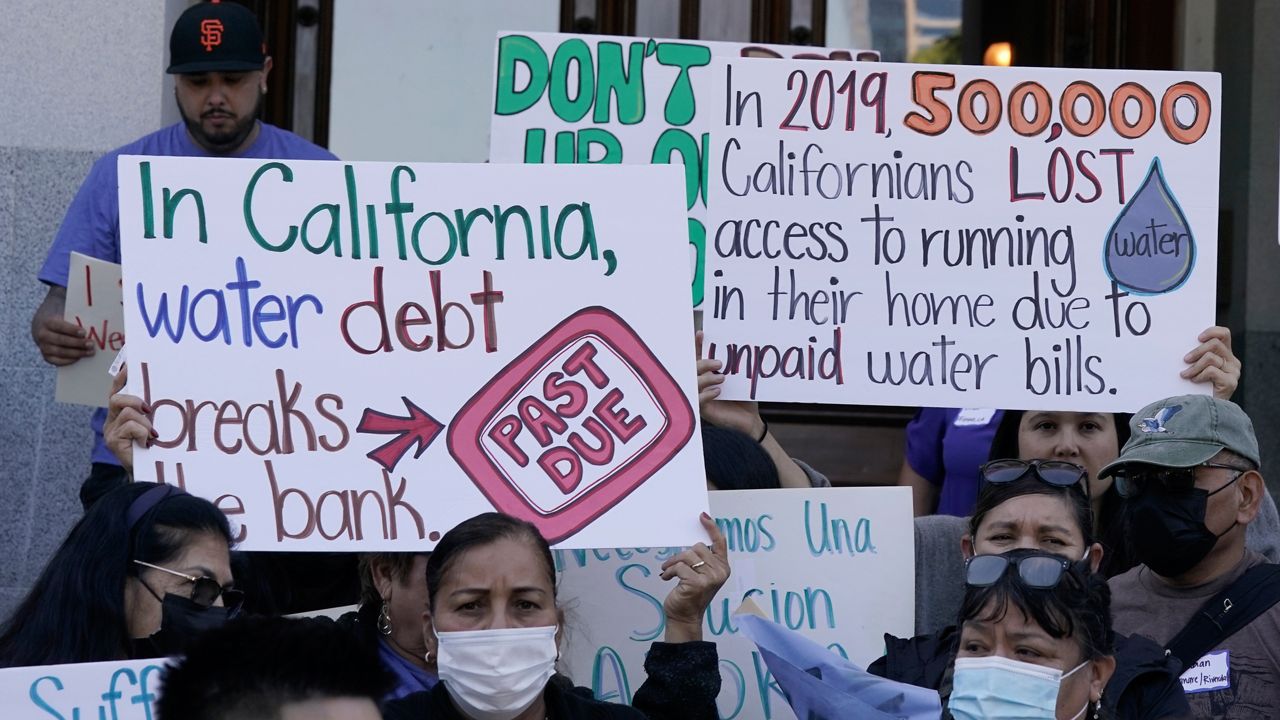SACRAMENTO, Calif. (AP) — The water that comes out of the tap for more than 900,000 Californians is unsafe to drink and the state isn't acting fast enough to help clean it up, state auditors said in a report released Tuesday.
Thousands of water systems supply the state's nearly 39 million people, and about 5% of them have some type of contaminate, like nitrates or arsenic, in them, according to the audit. That means people can't safely drink the water or use it to cook or bathe. Most of the 370 failing systems are in economically disadvantaged communities, many in the Central Valley, the state's agricultural heartland.
The State Water Resources Control Board has provided at least $1.7 billion in grants since 2016 for design and construction to improve water systems. That could include building new treatment plants, consolidating water systems or other actions designed to improve water quality.
But it took the board 33 months on average in 2021 for water system operators to complete the application process and receive money, the audit found — nearly double the time it took in 2017. The audit found a lack of clear metrics and poor communication created confusion for water districts seeking help and slowed down the award process.
“The longer the board takes to fund projects, the more expensive those projects become. More importantly, delays increase the likelihood of negative health outcomes for Californians served by the failing water systems,” acting state auditor Michael Tilden wrote in a letter to the Legislature.
Eileen Sobeck, executive director for the water board, told state auditors the board agrees the process could be clearer and faster. But she disagreed with the conclusion that the board hasn't acted with urgency to improve contaminated water systems, saying the board's “highest priority is advancing the human right to water." California made a right to safe drinking water state law in 2013. The water board has previously said it would need $4.5 billion to address all the needs through 2025.
She said the state has reduced the number of people who rely on contaminated water from 1.6 million in 2019 to less than 1 million today. It’s also provided $700 million in grants to water systems. It’s helped pay for construction projects in 90 communities, consolidation of 73 water systems, and begun streamlining the application process, she said.
E. Joaquin Esquivel, chair of the water board, said the audit’s finding that the board lacks urgency in addressing the problem is “salacious” but doesn’t reflect the “tremendous amount of progress” the board has made in helping water systems.
The state sets requirements for more than 100 water contaminants, including nitrate, arsenic and E. coli, limiting the amount that can be in water. Some, like nitrates, come from excess fertilizer used by agriculture. Different contaminants can cause respiratory problems for infants, harm the liver and kidneys, and increase the risk of cancer. Even when water isn't safe to drink, people still have to pay the water bill, plus the added cost of buying bottled water or hauling it in from elsewhere.
“Just because you're not drinking from the tap doesn't mean you don't have to pay for the access," said Kyle Jones, policy and legal director for the Community Water Center, which works to expand access to clean water.
Gov. Gavin Newsom, a Democrat, created a $130 million fund in 2019 to improve drinking water systems, particularly those that serve low-income communities. At the time, he called it a “moral disgrace" that Californians couldn't rely on clean water to drink or bathe. His office didn't respond to an email Tuesday seeking comment on the audit.
In one example of the slow process, the audit found the water board wasn't checking in enough on a technical assistance project for a water system in Kern County. Ten months after the board had assigned a provider to help the district, no work had been completed, causing the board to look for another provider. In another case, it took the water board 14 months to figure out whether a water district in rural Northern California was eligible for grant funding to improve its drinking and wastewater.
Water districts that took a survey from the auditor called the board's application process a “nightmare" filled with red tape and unclear expectations.
Michael Claiborne, directing attorney for Leadership Council for Justice and Accountability, said many Californians have been fighting for decades for clean water to no avail.
His organization advocates for safe and affordable drinking water access for communities in the San Joaquin Valley and east Coachella Valley, and it has been hired as a legal and technical consultant for some of the projects that receive board funding. As both an advocate and a contractor on some projects, he agreed with the audit's findings that the board needs clear metrics to access its progress and set expectations.
But he said local governments need to step up as well, as they can delay projects to consolidate water systems or begin new construction.
“Without cooperation from local governments and local water systems, you can't implement solutions," he said.



